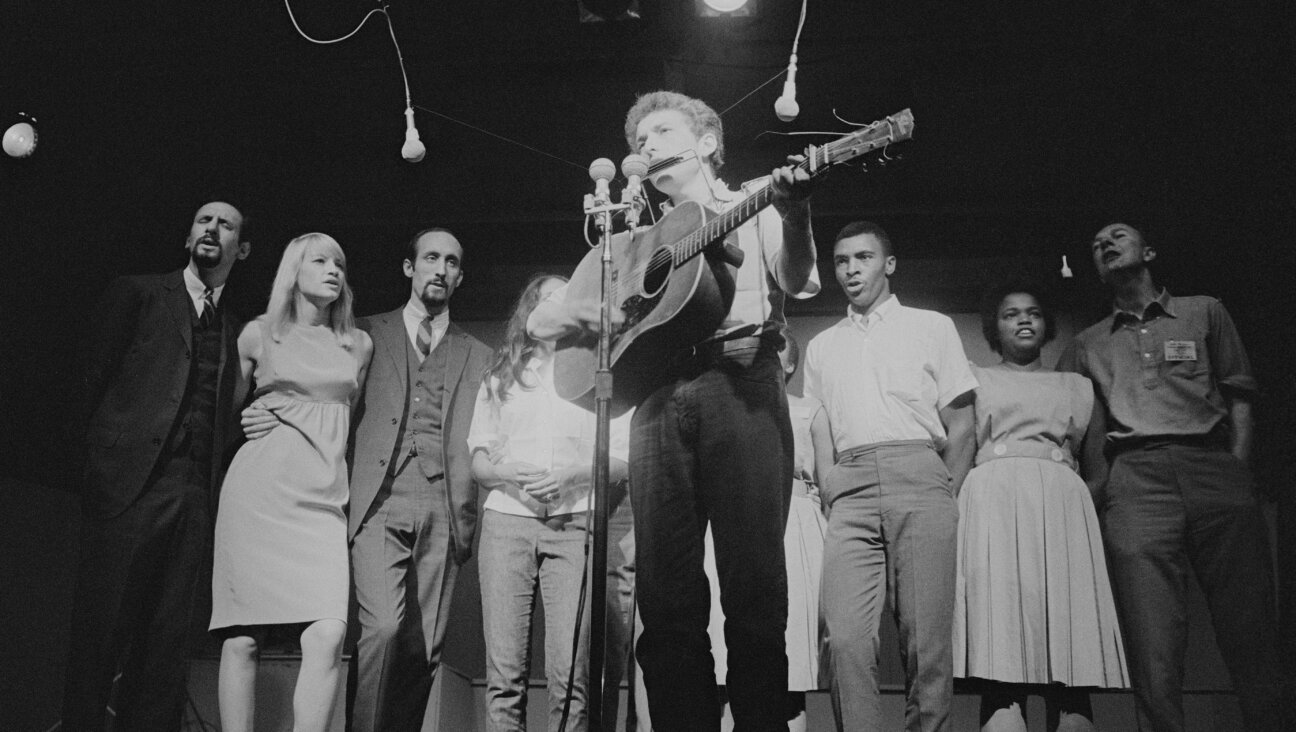This Bang-Up Music Doc Is One You Should Have Seen In 2017

Graphic by Angelie Zaslavsky
I first started digging for old records in thrift stores in the late 1980s, back when you could still score stacks of 45s from the glory days of AM radio at 5 or 10 cents a pop. In the course of each thrift store foray, I would almost inevitably come across a single or two on the Bang imprint; between the bright-yellow label and the witty pop-art logo — an antique derringer pistol shooting a comic book speech balloon containing the label’s name — records on BANG were pretty hard to miss, even on the dustiest shelf.
They were also, as I quickly learned, well worth picking up. Early Neil Diamond hits like “Cherry, Cherry” and “Kentucky Woman” were on Bang, as was Van Morrison’s “Brown Eyed Girl.” The Strangeloves’ “I Want Candy” and “Night Time” were on the label, too, as were the McCoys’ hits “Hang On Sloopy” and “Fever.” In addition to their colorful labels, the singles all seemed linked by a similar aesthetic — catchy, upbeat rock ’n’ roll songs that required only a few ener getically strummed guitar chords to get their point across.
These singles all had something else in common, as well, something they shared with such classic ’60s hits as the Drifters’ “Under the Boardwalk,” Solomon Burke’s “Everybody Needs Somebody to Love,” Freddie Scott’s “Are You Lonely for Me?” Them’s “Here Comes the Night,” Erma Franklin’s “Piece of My Heart” and a snappy, oft-covered little ditty called “Twist and Shout”: They were all produced, written and/or released by a guy named Bert Berns.
A hard-hustling son of Russian Jewish immigrants, Berns made an indelible mark on the popular music of the early-to-mid-60s. His songs were recorded by rhythm and blues greats like the Isley Brothers, Ben E. King and Wilson Pickett, and influenced (and were covered by) British Invaders like The Beatles, The Rolling Stones and The Animals. As the driving force behind Bang Records, he helped launch Neil Diamond’s career and established Morrison as a solo artist. But while Berns’s contemporaries, like Phil Spector, Jerry Wexler, Jerry Leiber and Mike Stoller, have all rightly achieved pop cultural recognition on a wider scale — and while his own music can still be heard today on oldies stations everywhere — Berns himself has long remained shrouded in semi-obscurity, in part because he had the misfortune to die in 1967 (at the age of 38), long before the general public had any real awareness or understanding of how “record men” like him created and shaped the pop sounds that they hungrily consumed.
Berns has experienced something of a posthumous renaissance in recent years, however, due in part to Joel Selvin’s excellent 2014 biography “Here Comes the Night: The Dark Soul of Bert Berns and the Dirty Business of Rhythm and Blues.” A jukebox musical called “Piece of My Heart: The Bert Berns Story” had an off-Broadway run in the sum- mer of 2014, and Berns was inducted into the Rock & Roll Hall of Fame last year, receiving the hall’s Ahmet Ertegun Award for nonperformers. And now, finally available via iTunes and Apple Music, comes “BANG! The Bert Berns Story.”
An enormously entertaining documentary directed by Brett Berns (Bert’s son) and Bob Sarles, “BANG!” paints a colorful tale of a man driven equally by an intense love of music and a nagging awareness of his own mortality. Born in 1929 in the Bronx, Berns nearly died of rheumatic fever as a child, and the toll that the disease took on his heart would cast a dark shadow over the rest of his time on the planet. While the filmmakers perhaps hammer a little too hard on the notion that “Piece of My Heart” (which was made famous by Big Brother and the Holding Company) was written by Berns in reference to his own cardiac issues, the documentary makes it clear that his lust for life and desire to leave a musical mark on the world were driven by the knowledge that he wouldn’t live to a ripe old age.
Indeed, Berns packed a lot of living into his 38 years. Initially drawn to the Afro-Cuban sounds popular in the nightclubs of 1950s New York City, Berns mamboed his way down to Havana in time to witness the Cuban Revolution. (He claimed to have crossed paths with Fidel Castro while he was there, though this may have been just some colorful mythmaking on his part.)
Returning to New York in 1960, he schmoozed his way into a $50-a-week songwriting gig for Robert Mellin Music, and scored a Top 20 hit a year later by writing “A Little Bit of Soap” for the Jarmels, an R&B vocal group. More Berns-penned hits quickly followed, including “Twist and Shout,” the Exciters’ “Tell Him” and Solomon Burke’s “Cry to Me” — all of which shared a bit of the Latin bounce that would characterize much of Berns’s songwriting work.
In 1963, Berns replaced Jerry Leiber and Stoller as a staff producer at Atlantic Records. Atlantic’s head honchos Ahmet Ertegun, Nesuhi Ertegun and Jerry Wexler would eventually become his partners at Bang Records, which Berns founded in 1965. (Berns also formed his own R&B label, Shout, in 1966.) While at Atlantic, Berns made the then unusual move of traveling to London to produce several British acts, including Them, the Irish R&B band that, led by Morrison, recorded Berns’s “Here Comes the Night.” When Morrison left Them in 1966, following a dispiriting tour of the United States, Berns snapped him up as a solo artist for BANG.
While BANG and Shout proved enormously successful ventures for Berns, he made almost as many enemies as he did hit singles. He quickly fell out with Wexler over money (Wexler is quoted at the beginning of the film as saying of Berns, “I don’t know where he’s buried, but if I did I’d piss on his grave”), while Diamond left BANG in a huff after Berns opted to release “Kentucky Woman” as a single in lieu of Diamond’s more introspective “Shilo.” Morrison, who thought he was coming to New York to record a handful of singles for BANG, was appalled to see his recordings cobbled together by Berns for an album called “Blowin’ Your Mind!”; the singer/songwriter would eventually extricate himself from a crummy deal with Berns’s publishing company by recording 31 nonsense songs (including such immortal tracks as “Want a Danish” and “Blow in Your Nose”) in a single afternoon session.
As was fairly common practice in the mobbed-up music business of the 1960s, Berns liked to surround himself with heavies. He counted Thomas Eboli, the acting boss of the Genovese crime family, as one of his closest pals, and he was shadowed for much of his career by a wiseguy named Carmine “Wassel” DeNoia. DeNoia’s interview segments in “BANG! The Bert Berns Story” are worth the price of admission in themselves; he boasts of throwing people out windows and expounds on the brilliance of Freddie Scott’s “Are You Lonely for Me” with equal degrees of enthusiasm.
Indeed, the characters in “BANG! The Bert Berns Story” are as memorable as Berns himself. Bravely flouting the unwritten rule that says all 21st-century music docs must feature Dave Grohl, Henry Rollins and/or Bono as interview subjects, the filmmakers largely let people who actually knew or worked with Berns tell his story; the lone exception is music critic Joel Selvin, who also wrote the narration delivered by Steven Van Zandt. Keith Richards, Paul McCartney, Morrison, Ronald Isley, Solomon Burke, Ben E. King, Stoller and Ellie Greenwich are just some of the notable folks who get screen time in the documentary. (The “extras” available via iTunes include over an hour of additional interview footage.) Also vividly present in the film is Ilene Berns, the former go-go dancer who wound up running BANG and Shout after her husband’s fatal heart attack. A tough cookie in her own right, she relates more than a few hilarious tales in the film, including one about the fateful night when she and Berns met: After accepting his invitation to a party at his apartment, she arrived to find that she was the only guest. “I said, ‘This isn’t a party,’” she recalled. “’This is a schtup!’”
For all of the documentary’s colorful characters and juicy stories, though, the filmmakers wisely never stray too far from Berns’s musical legacy. Perhaps the most affecting moment in the film is when the infamously cantankerous Morrison (whose willingness to be interviewed speaks volumes in itself about his respect for Berns’s work) describes his final conversation with Berns. Shortly before his death, Berns reached out to Morrison by phone and asked what he was up to. When Morrison replied that he was writing songs, Berns — who had become increasingly mired in the business end of BANG — grew wistful. “Yeah,” he said to Morrison, “That’s what I like to do!” And as “BANG! The Bert Berns Story” ably attests, he did it very well, indeed.
Dan Epstein is the author of ‘Stars and Strikes: Baseball in the Bicentennial Summer of 1976.’

















